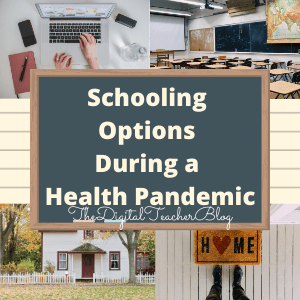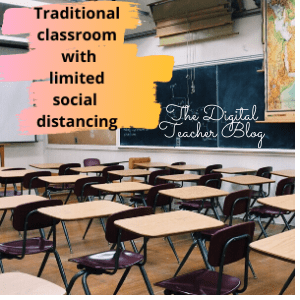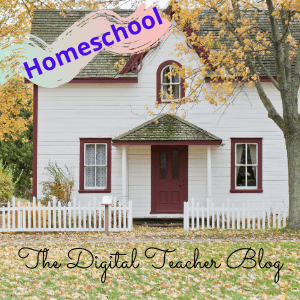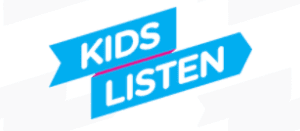Reopen Schools
Have you started thinking about returning to school this fall? There are many questions about reopening plans and learning options. Districts across the nation are considering various aspects to ensure safety while opening schools for learning during this COVID-19 health pandemic.
I know we still have memories of this past spring when literally the entire world went into COVID-19 quarantine. Then gradually over the summer, many communities were able to stabilize the case count and begin opening up businesses and leisure activities. Life started to get back to some kind of “normal”. However, with a new surge in COVID-19 cases across the nation and schools heading into session, we are beginning to wonder how this school year is going to open. Will classes be held via remote learning? Blended learning? Face-to-Face? There are many aspects parents should consider with this important decision. What is the best option for my child? Family?

Reopen Schools: Options
Fortunately, parents have several options to consider regarding their child’s education:
-
traditional model
-
blended learning
-
distance learning
-
homeschooling
Depending upon the needs of the child(ren) and family, parents are able to make a decision that best supports their child’s learning situation.
Recently, USA Today completed a nationwide poll and found that 59% of parents with K-12 students are likely or somewhat likely to pursue some type of “at home learning model” whether that is blended learning, distance learning, or even homeschooling for their children when schools reopen this fall.
Parents may be wondering what the differences are in these learning formats. Let’s take a closer look at the schooling options, so parents can make an educated decision.

Reopen Schools: Traditional
Schooling as we knew it prior to March 10, 2020 is what we think of as “traditional face-to-face” education. K-12 students attend a brick and mortar school. Students work with peers and their teacher(s) to engage in a variety of experiences that promote learning and achievement. Homework is typically assigned to practice new skills and students enjoy recess, lunch, and special classes with their peers. Finally, school is in session during the morning and afternoon, five days a week, and sports and clubs are offered for afterschool activities.
Depending upon the active COVID case count in your area will likely determine if local schools will be open for a traditional learning experience. Some states are already determining this will not be an option to reopen schools.
The challenge school districts are working to mitigate is keeping students and staff safe and healthy. Educators, administrators, and community stakeholders are examining solutions to overcome the number of students in each classroom, hallway passing times, lunch, recess, and transportation, which in a traditional sense, will continue the spread of COVID-19. This is the challenge schools faced in March 2020. The solution at that time was to immediately close schools.
In order to overcome the stated concerns, students and staff will likely have some health precautions to take. For example, wearing masks, accessing hand sanitizing stations, ongoing extensive cleaning, and engaging in social distancing in the classroom and throughout the building. What this looks like will vary by state, districts, and schools.
We all understand that classrooms do not accommodate social distancing; therefore, districts are putting together plans to assist with this challenge. One of these plans will likely be some sort of Blended Learning or Hybrid Learning environment. However, even this model will have its challenges.
Reopen Schools: Related Resources on Traditional

Reopen Schools: Blended Learning
Many parents are not familiar with Blended Learning. So what is Blended Learning?
The Blended Learning Model or Hybrid Model involves some aspect of students learning at school and learning at home. This model would certainly assist schools with accommodating large number of students.
To achieve this goal, there has been talk about all types of schedules. Some districts will opt for a week on, week off rotation where half of the students attend school face-to-face week 1; whereas, the other half of students will be at home learning. Then the following week the students will switch learning environments and continue with assignments.
Another model is using this same format above; however, half of the students attend school 2-3 days a week and learn at home the remaining days.
Yet another model is for half the students to attend AM sessions at school and the other half attend PM sessions. As you can see, regardless of the format, there is certainly a blend of learning at school and home with a reduced class size.
The main reason to use a Blended Model or Hybrid Model is to maintain a learning environment with reduced students to overcome the challenges of a Traditional Learning Model. Depending upon the school and teacher, there could be paper/pencil assignments to complete during the at home learning time or even technology lessons to further support learning in the classroom. Students may also have time to work on learning projects alone or with a partner, depending upon the learning requirements. Parents would need to adjust work schedules to accommodate this learning schedule, too, or work with an older person to ensure childcare isn’t a problem.
Reopen Schools: Related Resources 2
My Top 10 Technology Tips to Personalize Learning

Reopen Schools: Distance Learning
What is Distance Learning? I often hear parents ask, “Isn’t this the same learning that happened at the end of the school year? I’m not sure this is the best learning for my child.”
Distance learning, e-learning, remote learning, learning at home . . . these words are synonymous. This is the learning that was taking place when schools shut down and everyone went into quarantine learning mode. Unfortunately, the learning that students experienced at that time was really “crisis learning”, not distance learning.
Let me explain. Distance learning takes place at home, not in the brick and mortar school. Typical distance learning involes students using technology, reading text, watching videos, engaging in online peer discussions, completing and submitting assignments online. Learning expectations are high and students take on a majority of the workload to demonstrate learning. Students generally create their own study schedule; however, sometimes there is a “class meeting” set for students to attend that is led by the teacher. You may be thinking, that’s what my child did.
Now . . . did your child really engage in distance learning? Nationwide there was concern about meeting the specific learning needs of students. Did all students have technology? Internet? Another adult at home to help when needed? How would students be graded? What work should be graded? There were so many variables that could impact the student’s success, not to mention the impact COVID cases had directly on students, families, and teachers nationwide.
Additionally, teachers literally had a few days (in my case 2 days) to revamp lessons over spring break and be ready for online instruction.
As a result of all these challenges, educators had to adjust their expectations for learning and achievement. Therefore, the 4th quarter was “watered down”, and parents’ and students’ view about distance learning resulted in a horrible experience with low expectations. This is unfortunate because distance learning can be a great learning option for all learners, when implemented correctly.
With all that said, distance learning is not for all students, and distance learning is not for all teachers. Teachers need to have experience learning and teaching online in order to begin developing pedogogical practices that will support student learning and achievement. Students need to have time to become familiar with the learning platforms to be more successful using them.
When done correctly, distance learning is a great opportunity for students to have personalized learning opportunities, develop independent learning skills and strategies, and hold oneself accountable for his/her work ethic.
During distance learning, students have more choice in what to complete and when to complete the work; however, they also need to be more engaged in their learning. The learning needs to be active; whereas, the student puts in effort to learn and study, even redoing lessons until the concept is understood. The teacher acts as a facilitator in this learning process. Distance learning is more work for the student, and this could be a great way for some students to learn.
Now that schools have had more time to plan and many teachers have had additional online learning and instructional experiences, as well as summer classes about online pedagogy, distance learning should be more organized with higher expectations for students learning and achievement.
Reopen Schools: Related Resources about Remote Learning
We’re Doing This: Launching Distance Learning
Distance Learning in Full Swing

Reopen Schools: Homeschool
Parents want to know how this homeschooling model will benefit their child and what support is needed when a challenge arises. There is a lot to consider regarding this learning model because it impacts the entire family. When done well, this is a great learning model.
Homeschooling is an option for all parents. This is an opportunity for parents to be the teacher and have more control over the curriculum and daily structure. There are often different programs available via the local school district, as well as statewide or nationwide K-12 learning organizations. Some districts have a specific school that is dedicated to homeschooling families. Even the specific homeschooling options can be different depending upon the school’s philosophy.
Although parents are the home teacher, certificated teachers are available to support parents with instruction, student learning challenges, instructional materials, and often offer classes for parents and students at the main school building or online.
There are also many homeschooling family groups that provide optional opportunities for students to get together and engage in social interactions. Considering the COVID situation, a family may decide to opt out of these gatherings or engage with a small number of families to obtain socialization purposes.
Depending upon the student’s needs, homeschooling can be a great option for families. This model offers time and curriculum flexibility, educational support, and opportunities to personalize the curriculum to meet each student’s needs.
Do you have more questions looming in your mind about homeschool? Check out “Should I Homeschool? 10 Key Questions to Help You Decide”, where MaestraMom shares more insights from her personal experiences as a homeschool parent.
Reopen Schools: State-by-State School Reopening Plans
The US federal government has left the decision for individual states to determine what is best for fall school reopening in their districts. Even at this level of government, many states are leaving this decision up to the local districts.
There are a few resources available, and as the situation changes across the nation within each state, the opening plans will also be changing. Check out your state’s plan for the latest information to make your decisions.
Today my district sent out an opening update to staff that includes current opening protocals as well as mitigation plans. Additionally, town hall meetings for staff and additional meetings for community members have been scheduled over the next two weeks.
With school starting here in Alaska in three weeks, getting information out to families about what school will look like/operate is paramount. Contact your local school district for more information about fall school reopening procedures, options, and expectations.
Reopen Schools: A Parent’s Decision
“Local school leaders, public health experts, educators and parents must be at the center of decisions about how and when to reopen schools, taking into account the spread of COVID-19 in their communities and the capacities of school districts to adapt safety protocols to make in-person learning safe and feasible,” the statement said. “For instance, schools in areas with high levels of COVID-19 community spread should not be compelled to reopen against the judgment of local experts. A one-size-fits-all approach is not appropriate for return to school decisions” (Education Week, July 14, 2020).
Reopen Schools: Related Articles About Distance Learning and Homeschooling
Here are a few posts you may find helpful to utilize, regardless of your learning option.
How to Teach Imagery with Picture Composition
Reopen Schools: Final Thoughts
While stakeholders are sharing their thoughts, parents will have the ultimate final decision to make regarding the education for their child(ren). Fortunately, there are several options (shared above) and ongoing conversations to assist parents in this decision making process.
Considering your child’s learning style, specific needs, the school’s mitigation plans, and family contributions will assist you in determining what is the best learning model for your child’s education.
Remember, throughout the year, the COVID-19 situation is going to change; therefore, the learning format will likely need to be adjusted as we continue into the school year. Choosing what is best for your child and family situation is where you’ll need to start for now, and as the year continues, adding in some grace and flexibility while we all navigate this new school year together is going to be essential.



We are definitely in some different times. I have three kids in the different schools and all have different return plans. We shall be a work in progress!
Yes, a “work in progress” in so many different ways for this school year.
Thank you for this thorough post – it’s so very helpful. It’s definitely homeschooling for my family. Blessings!
I am so happy that my boys are grown and I don’t have to navigate the school and daycare situations.
Yes, those are my thoughts exactly. I just need to figure out how to work safely in this environment now.
It will be interesting to see what our options are here in Canada for our kids return to school in September. At this point in time we have no idea what is happening in our Province.
Good information. My oldest grandson starts kindergarten in a couple of weeks.
This is such a trying time for everyone. Thanks for the post and best luck with this upcoming schoolyear.
So many decisions that need to be made, and special needs students are going to really need the extra help. Thank you for sharing your expertise!
I’ll either homeschool or have my son do distance learning. I am at a significantly increased risk for complications from Covid-19, so it only makes sense. It’s unfortunate, since it will be his sophomore year of high school, but better to miss that than to miss me. Many in our community are not taking it seriously.
I totally agree with you!! Homeschooling will be the best place!!
The lawsuits are already filed in my state to keep teachers online and out of schools. There are just so many unknowns.
So many parents are struggling now with very real dilemmas. I see new moms pop up every day on homeschooling boards asking for advice (both on K-12 and true homeschooling). They have major decisions to make in a very short amount of time. I think this post is very helpful in explaining the options available.
Yes, I agree!! Parents need to be well informed in order to make the right decision. Not only does this impact the student, but the family, too.